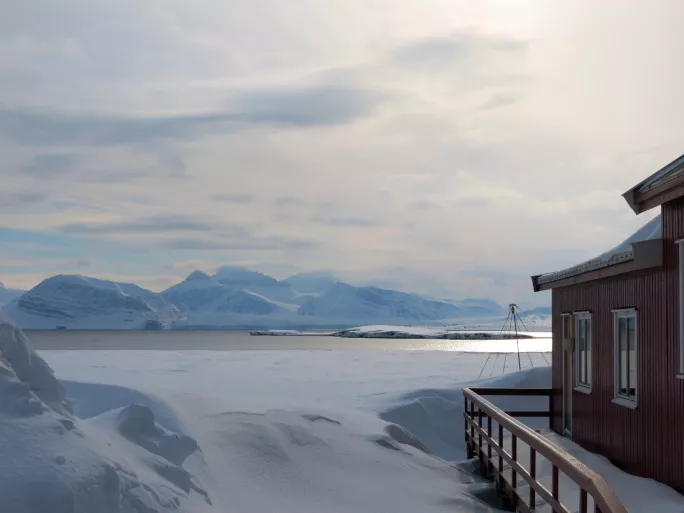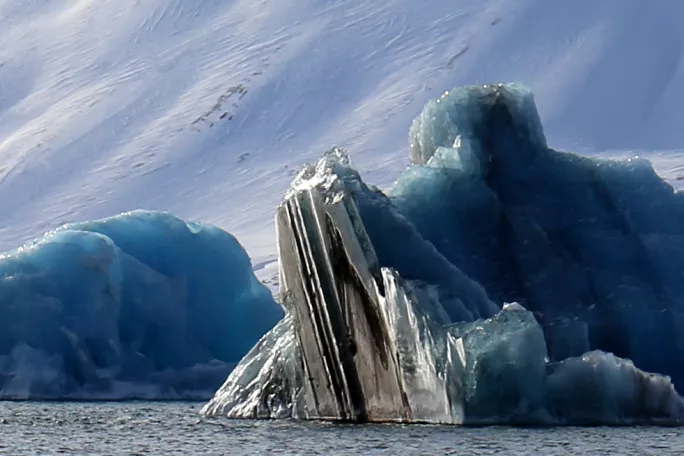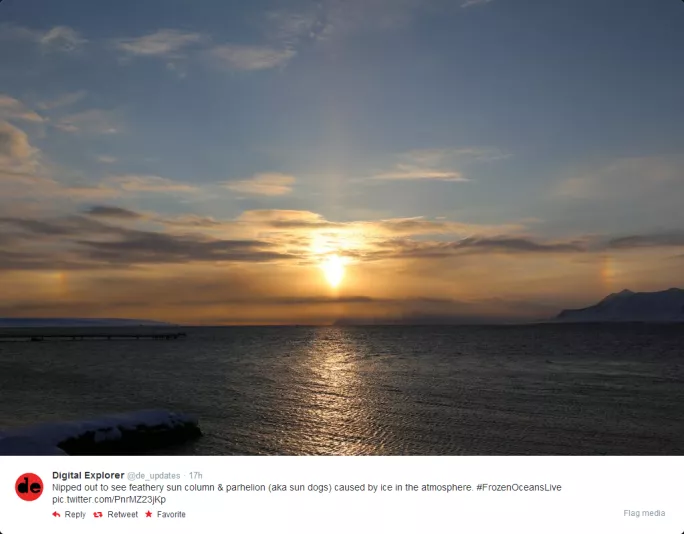‘I’m in the Arctic, but I have better connectivity than many UK classrooms’
Jamie Buchanan-Dunlop, educator, expedition leader and director of Digital Explorer, writes:
The NERC Arctic Research Station in Ny Ålesund
A polar bear hasn’t chewed my internet connection, so I am sat in the office of the NERC Arctic Research Station with better connectivity than many classrooms in the UK as part of a two week long live Arctic education event: #FrozenOceansLive.
“I’ll be up in the Arctic for a couple of weeks, would you like me to Skype with your class?” I might ask a teacher.
“I’m not sure if we’re allowed to use Skype in the classroom, but I’ll see if I can book a room in the library down the road,” was one reply.
I am ashamed to say that I didn’t study much geography at school. It did not have the standing it deserved and was regarded as a soft subject. I regret that my self-structured geographical education through travel and reading lacks the rigour that an academic grounding could have given it.
On the flipside, I am struck by the fact that for the most part, we teach geography in a box. The subject that enables young people to understand their changing world, its environments, its people and processes and the interaction between the physical and the human.
In the 21st-century classroom, we have the ability to connect students to the world, in ways that my 12-year-old self could only have dreamed of. I would not have had to make do with dog-eared black and white photographs of glaciers or rainforests, but could have been transported there by the technological tools that educators can now access.
From the Arctic, I still experience a digital divide separating educational access for young people: the school in Northern Ireland that cannot access Skype; other schools that cannot access our social media streams on Twitter, Facebook, Instagram or Vimeo.
What does the bottom of a glacier look like? Dark and smooth. All the more easy to see when it is floating in a fjord.
As an educator working with expeditions, it is a joy to be able to respond to a question posted by a student on Twitter or Instagram, to be able to stick my laptop out of the window and guide them through the Arctic landscape and navigate past an iceberg that fascinates me more than a cumbersome sketch ever did.
I believe that geography teachers should militate for a bare minimum of technology access in the classroom, so that they can access the immense library of resources online; connect live with expeditions and experts around the world and interact with social media content being generated by those at the cutting-edge of geography and discovery.
Uploading educational videos from Antarctica in 2009
A minimum technology stack for the 21-century geography classroom to connect students to the world should be:
Access to the library
Who needs textbooks when there are so many resources online? A networked computer with decent internet speed, a digital projector, speakers and access to the glories of YouTube and Vimeo and of course a dollop of Google Earth goodness.
The ability to connect with experts
There’s an overdue shift from the teacher as font of all knowledge to facilitator. It’s far easier for me and many others to use a video chat service like Skype or Google Hangouts to speak to your class, rather than spending half a day or more coming into your school, for only an hour or so of contact time.
Interacting with content
We all use social media and I realised that there are good reasons for cautious child-protection centred approaches to this, but commentators have been writing about the powering-down effect that many students face coming into school for years. It’s been great being able to respond to student queries via Instagram or Twitter. I’ll leave the digital citizenship and online safety to the amazing folk at CEOP and others.
This blog was interrupted by a solar phenomenon. Potentially a useful talking point in a geography classroom somewhere tomorrow, as long as Twitter can be accessed.
A polar bear has been spotted this afternoon, just a few miles up the coast from the base. It may still chew my internet connection and block me off from the outside world. Back in the UK, however, there’s no excuse for blocking tools that can help connect students to the wider world.
This blog has been posted as part of TES Geography Week. For more content, including an overview of what’s changing in the geography curriculum in England, visit our TES Geography Week landing page.
Register with Tes and you can read two free articles every month plus you'll have access to our range of award-winning newsletters.
Keep reading with our special offer!
You’ve reached your limit of free articles this month.
- Unlimited access to all Tes magazine content
- Save your favourite articles and gift them to your colleagues
- Exclusive subscriber-only stories
- Over 200,000 archived articles
- Unlimited access to all Tes magazine content
- Save your favourite articles and gift them to your colleagues
- Exclusive subscriber-only stories
- Over 200,000 archived articles







